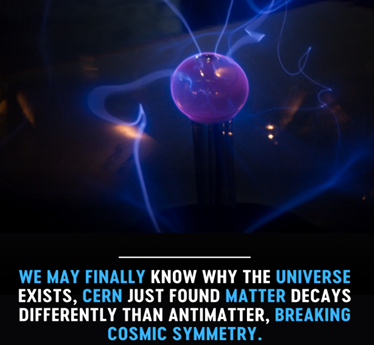PREVIOUS
CP violation
July 26 , 2025
118 days
487
0
- The first experimental evidence of the breaking of charge–parity (CP) symmetry in baryons has been obtained by CERN’s LHCb Collaboration.
- The result is consistent with the Standard Model of particle physics.
- The Current models of cosmology say that the Big Bang produced a giant burst of matter and antimatter, the vast majority of which recombined and annihilated shortly afterwards.
- But the universe appears to be made almost exclusively of matter with very little antimatter in evidence.
- This excess of matter is not explained by the Standard Model and its existence is an important mystery in physics.
- In 1964, James Cronin, Valentine Fitch and colleagues at Princeton University in the US experimented on the decay of neutral K mesons.
- This had showed that the weak interaction violated CP symmetry, indicating that matter and antimatter could behave differently.
- Fitch and Cronin bagged the 1980 Nobel Prize for Physics.
- Numerous observations of CP violation have subsequently been made in other mesonic systems.
- The phenomenon is now an accepted part of the Standard Model is parametrized by the Cabibbo–Kobayashi–Maskawa (CKM) matrix.
- This describes the various probabilities of quarks of the very different generations changing into each other through the weak interaction – a process called mixing.

Leave a Reply
Your Comment is awaiting moderation.


